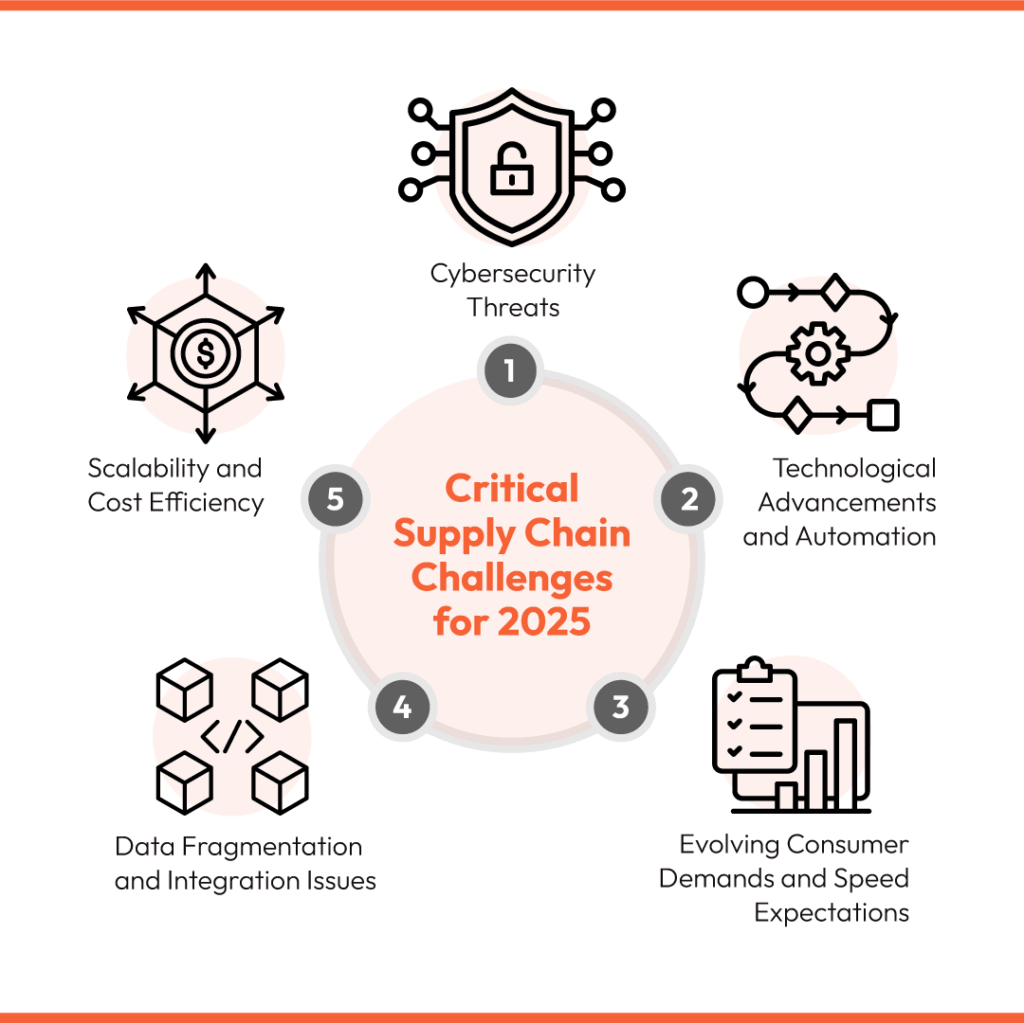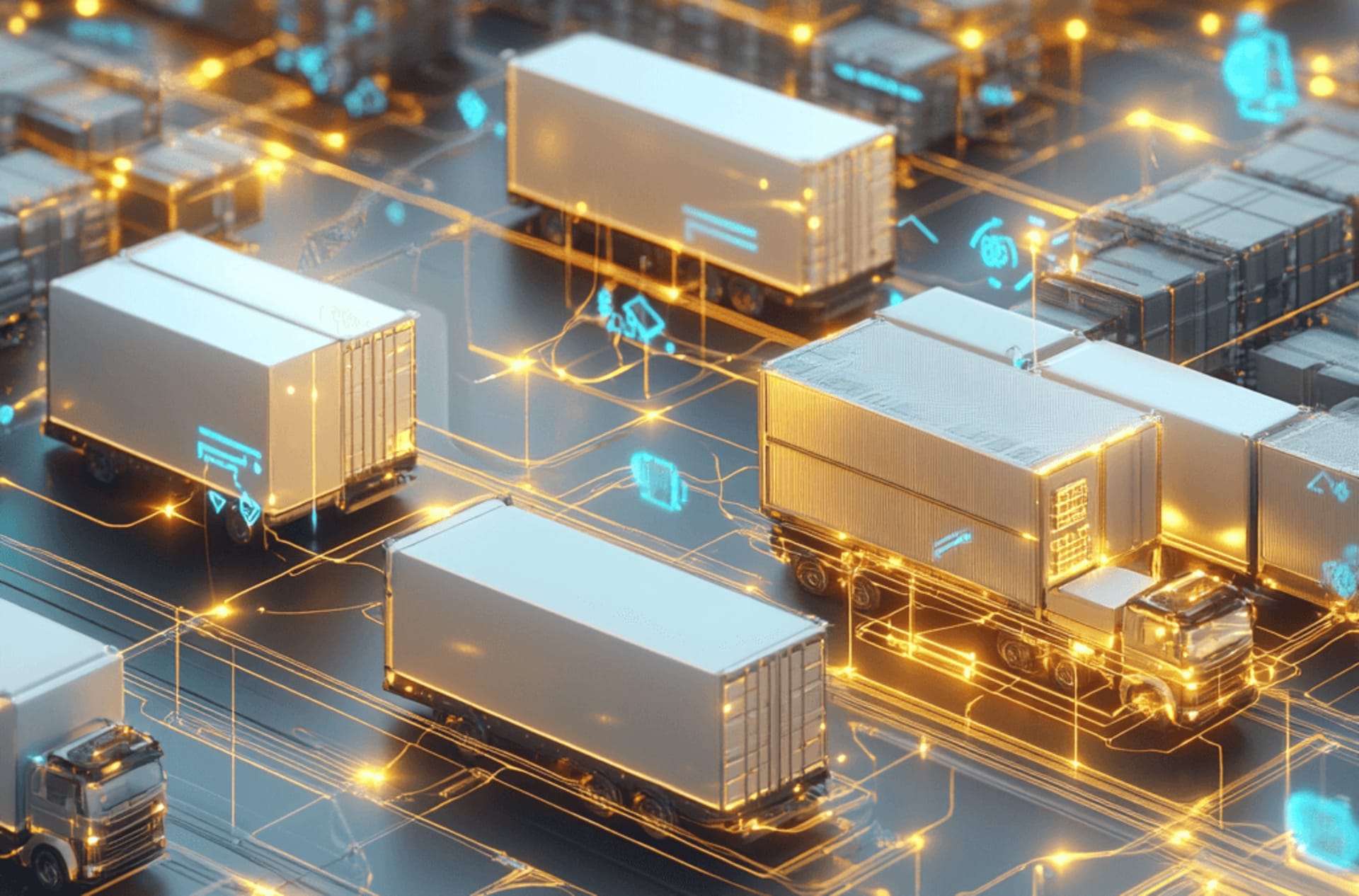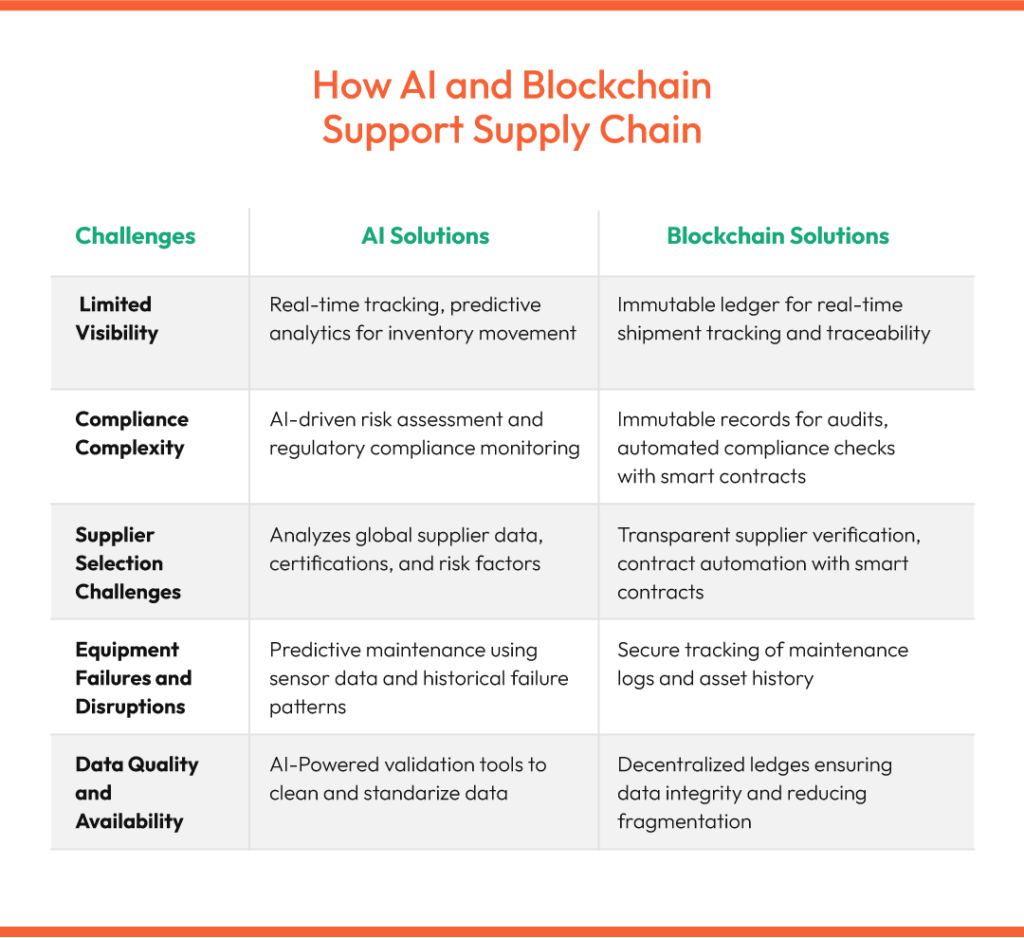Supply chains are messy. You know it, I know it. Missed shipments, counterfeit products, inventory chaos, it’s all part of the game. And if you’re running logistics for a company, you’ve probably dealt with all three more times than you’d like to admit.
Take counterfeiting, for example. The fake fashion market alone is worth $600 billion, and nearly 40% of that is just sneakers. Brands slap on seals and certificates, but guess what? Those get faked too. Traditional tracking methods aren’t cutting it anymore.
And it’s not just fraud—supply chains are full of blind spots:
- Limited Visibility – Once products leave a factory, tracking gets murky.
- Fake Goods Slip Through – Without airtight verification, counterfeits flood the market.
- Demand Forecasting is a Gamble – Poor data means overstocking, stockouts, and delivery nightmares.
If you’re planning on investing in supply chain enhancement this year, you’ll be looking at these five critical areas.

So here’s the real question. Why are we still relying on outdated systems when AI and blockchain can do better? These technologies bring real-time tracking, fraud prevention, and predictive insights—all in a way that actually works. And with the blockchain supply chain market projected to hit $1.26 billion by 2025, this shift isn’t just coming—it’s already here.
Tracking Made Simple With Blockchain
Data breaches, counterfeits, and cargo theft aren’t just headaches; they’re expensive, reputation-killing problems. And let’s be honest, traditional tracking methods like paper-based documentation, centralized data bases and barcode scanning are outdated, siloed, and easy to manipulate. This is where blockchain steps in as a solution for supply chain visibility and security.
Authenticity, Guaranteed
Ever wonder if a product is real or fake? Blockchain records every step in a product’s journey—from factory to final sale—ensuring zero room for fakes. No more sketchy middlemen, just verifiable proof of origin.With blockchain, every product carries a cryptographically recorded history, making counterfeiting virtually impossible.
End-to-End Transparency
No more “Where’s my shipment?” panic. At any moment, businesses can track exact locations, batch numbers, expiration dates, and even temperature conditions (crucial for pharma and perishable goods). Unlike traditional tracking tools, blockchain ensures immutable data, so no one can tamper with shipment records, reducing fraud and lost inventory disputes.
No More Paper Trails
Instead of relying on manual approvals and paperwork, smart contracts automate key tasks like instant payments when a shipment is delivered. These self-executing contracts also handle compliance checks, reducing human errors and speeding up logistics. Blockchain eliminates reliance on slow, outdated EDI systems, streamlining processes across suppliers, shippers, and regulators.
But blockchain’s impact goes beyond just tracking and authentication. Businesses are now leveraging it to solve long-standing inefficiencies. Let’s look at how companies are applying blockchain to streamline operations and unlock new opportunities.
Blockchain Reshaping Supply Chains in 2025
From financial transparency to supply chain efficiency and regulatory compliance, the impact of blockchain is growing. Here are some key ways we’ve helped clients leverage blockchain today:
- Real-Time Payment Visibility – International payments are often slow and hard to track. With a blockchain-based payment network, every transaction is recorded on a public ledger, allowing instant visibility for senders and receivers.
- Supply Chain Tokenization – Waiting months for a payment can put a strain on any business. Instead of relying on loans or chasing down payments, companies can turn invoices into digital assets on blockchain. Investors buy them at a discount, giving the business cash upfront. Once the invoice is paid, investors collect the full amount and make a profit.
- Compliance & Traceability – Ensuring compliance with trade regulations, sustainability requirements, and industry standards can be complex. Blockchain provides a tamper-proof audit trail for product origins, certifications, and regulatory documentation. This enhances transparency, reduces fraud, and simplifies compliance reporting across global supply chains.
Like any transformative technology, it’s not without its challenges. While adoption is growing, businesses still face key obstacles that need to be addressed before blockchain can reach its full potential.
Challenges Slowing Down Blockchain Adoption
Blockchain boosts security, but once data is recorded, it can’t be changed, even if it’s wrong. Whether it’s a typo, a mislabeled shipment, or outright fraud, bad data stays bad. This can create problems instead of solving them. Use AI-powered verification and IoT sensors to catch errors before they’re logged.
Aditionally, blockchain enhances security, but supply chains remain prime targets for cyberattacks. Hackers exploit IoT vulnerabilities, weak smart contracts, and supplier networks to steal data or disrupt operations. Businesses must integrate AI-driven threat detection, permissioned access controls, and blockchain-based identity verification to safeguard their systems.
Lastly, public blockchains can be slow and expensive, while legacy supply chain systems weren’t built for blockchain. Hybrid models, middleware, and cross-chain solutions ensure seamless integration without bottlenecks.
AI’s Role in Supply Chain Optimization
We’re seeing AI shift supply chains from automation to autonomous decision-making, optimizing procurement, logistics, and risk detection. Clients have started to embrace AI-driven operations, but challenges like data quality and system integration remain. This year the priority is clear. Use AI for resilience, efficiency, and agility in an unpredictable market.
By now, here’s how AI is optimizing supply chains by improving inventory management, preventing disruptions, and providing real-time visibility.
- Smarter Demand Forecasting: Today’s consumers expect faster deliveries and personalized inventory availability. AI predicts demand by analyzing past sales, market trends, and external factors like weather or economic shifts. More importantly, it enables dynamic inventory allocation, helping businesses prevent shortages and avoid overstocking while keeping up with speed expectations.
- Faster, More Efficient Logistics: Manual logistics planning is time-consuming and costly. AI optimizes traffic patterns, fuel consumption, and delivery schedules. It identifies the best routes, cutting costs, and speeding up deliveries.
- Proactive Risk Management: AI monitors supply chain activity in real time, detecting risks like supplier delays or extreme weather or geopolitical events before they cause major disruptions. Early warningsallow businesses to adjust shipments or secure backup suppliers proactively.
AI Solutions for Supply Chain in 2025
Let’s take a look at real-life use cases of AI solutions that can help your business to manage its supply chain without the usual delays.
Better Inventory Management With Digital Twins
A retailer with hundreds of stores and warehouses needs accurate tracking to prevent shortages and excess stock. Digital twins act as virtual versions of supply chains, continuously monitoring inventory, sales trends, and seasonal demand in real time.
Instead of auto-reordering, AI detects imbalances and suggests redistributing stock, reducing excess purchases and storage costs.
Preventing Problems Before They Happen
For a dairy company, a refrigeration failure means wasted products and safety concerns. AI can analyze sensor data and maintenance logs to predict failures. If it detects patterns of minor issues leading to breakdowns, it alerts teams to fix them early, preventing disruptions and losses.
Faster Supplier Selection
Finding the right supplier isn’t just about price. A fashion retailer sourcing sustainable cotton must consider quality, reliability, and ethical standards. AI scans global pricing, certifications, and risks, quickly recommending the best suppliers without long research delays.
Now that you understand how AI and blockchain can address key supply chain priorities, here’s a concise table outlining current challenges and effective solutions.
Overcoming Barriers to Adoption with Nearshoring
Adopting AI and blockchain comes with challenges, but the right strategy can make the transition seamless. Here’s how nearshoring helps tackle key hurdles:
Breaking Down Data Silos
Most supply chains are a mess of disconnected systems, and this could be your case. Now, AI and blockchain thrive on clean, unified data, but integrating legacy ERP, inventory, and logistics platforms? That’s where things get tricky. Instead of ripping everything out and starting over, a nearshoring partner can build custom APIs, middleware, and cross-chain solutions to connect the dots. The result? Real-time insights, AI-powered decisions, and zero data headaches—all without a full system overhaul.
Scalability Issues
Public and private blockchains have limitations—high fees, slow speeds, and scaling difficulties. A hybrid blockchain approach keeps critical operations private while logging essential data on a shared ledger. Nearshoring teams help businesses scale with custom-built connectors and automation tools, eliminating bottlenecks and ensuring smooth operations.
Data Quality and Availability
AI and blockchain thrive on clean, real-time data, but many supply chains still rely on fragmented information. Standardizing data collection and using AI-powered validation tools reduces inconsistencies and improves automation. A tech partner can implement hybrid or private blockchain models to enhance efficiency, cut manual work, and ensure scalable, cost-effective operations.
Other Ways to Strengthen Your Strategy
Partnering with tech providers is a great start and the one we recommend. However, businesses can do even more to make AI and blockchain adoption smoother without getting stuck in complicated setups.
- Go with Blockchain-as-a-Service (BaaS): Setting up a blockchain from scratch is costly and complex. BaaS platforms handle the heavy lifting, letting businesses track shipments, secure transactions, and store records—without building everything in-house.
- Fill the Talent Gap with Upskilling or Hiring Experts: AI and blockchain expertise is in short supply. Upskill existing teams with certification programs or bring in specialists to guide implementation and strategy.
Future-Proofing Supply Chains
A strong supply chain isn’t just about moving goods—it’s about trust, efficiency, and resilience. Customers expect authenticity, inventory needs precision, and transactions should be seamless. AI predicts demand, prevents shortages, and automates workflows, while blockchain stops counterfeits, secures data, and speeds up transactions with smart contracts.
Of course, adopting new technology takes planning. If you’re looking to bring AI or blockchain into your supply chain but need guidance, our team is here to help with the design, setup, and integration of blockchain services—so you can focus on running your business while the technology works for you.








